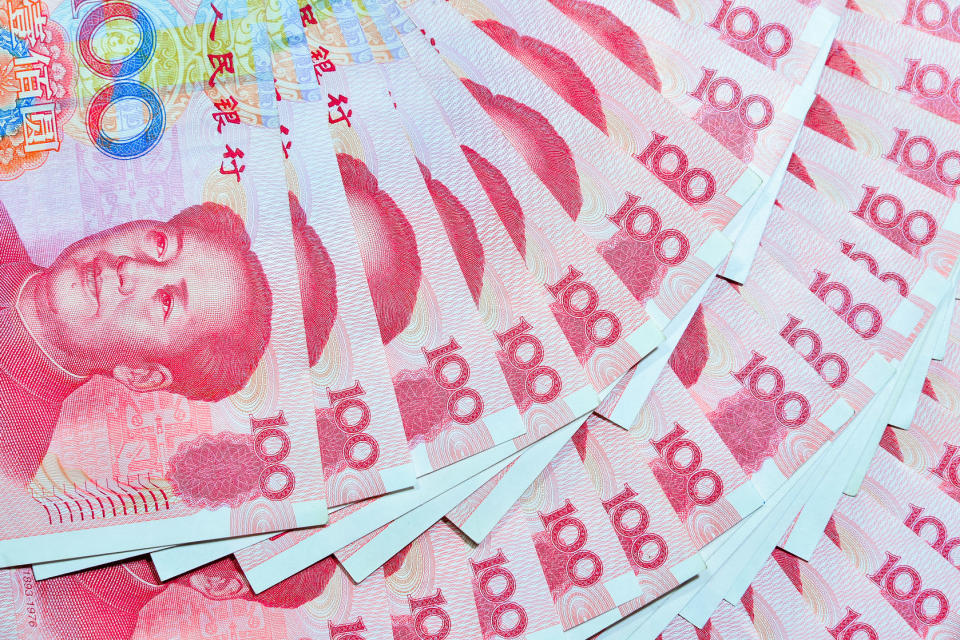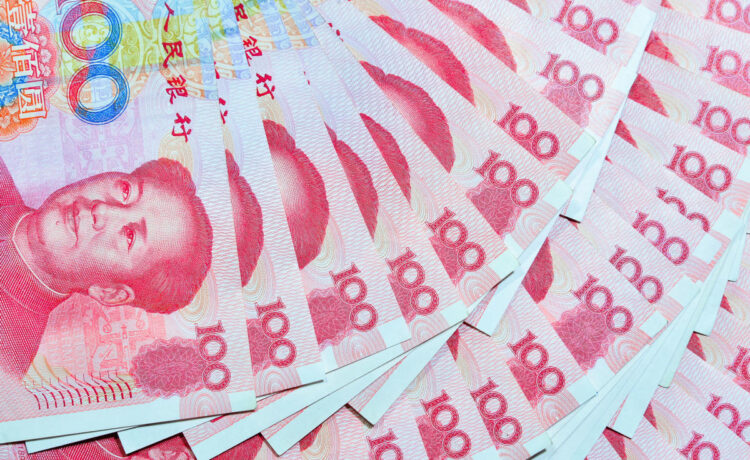In this article, we discuss the 10 worst performing currencies in Asia. If you want to read about some more worst performing currencies, go directly to 5 Worst Performing Currencies in Asia.
Asian currencies have been some of the worst affected as economic uncertainty sweeps across the world because of persistent inflation, rising geopolitical tensions, and a rapidly changing power dynamic between the North and the South. The influence of China and Russia on economies in Asia is also one of the prime reasons behind the weak performance of Asian currencies. Although the West has tried to squeeze the Russian economy to extract military benefits, most of the problems associated with the Chinese economy come from domestic troubles. Even large corporations in the US like Mastercard Incorporated (NYSE:MA), PayPal Holdings, Inc. (NASDAQ:PYPL), and JPMorgan Chase & Co. (NYSE:JPM) are cautious of investments overseas in the wake of these developments.
For example, Western sanctions on Russia have increased energy prices around the world since Russia is one of the biggest energy exporters not only to Europe but to Asia as well. Alongside energy, Russia is also a top food supplier to the globe. Even though Russian authorities are offering energy and food at discounted prices to tackle Western sanctions, there have been few takers, mostly only for publicity. Russian setbacks in Ukraine and a mutiny in Moscow have also done little to allay the concerns of Russian allies in Asia who are looking towards Moscow to ease their currency troubles. These events, combined with a strong US dollar, have pushed Asian currencies down. The South Korean Won, the Chinese Yuan, the Syrian Pound, and the Thai Baht have been some of the worst affected.
Asian economies are tied closely to China and a real estate slowdown in the country pressured Asian currencies this year. However, earlier this week, the central bank in China announced that it would keep benchmark lending rates unchanged. The decision was in line with expectations as the government seeks to further stabilize the economic reopening following stringent COVID-19 restrictions. A weakening yuan in the open market has reduced governmental urgency to lower interest rates for growth. Xing Zhaopeng, a senior China strategist at financial services firm ANZ, has said that the growth forecast for China for the next two years has been revised to above 5% from around 4% earlier.
Asian currencies have, however, been hit hard by news from the other side of the Pacific. In the United States, the Federal Reserve chose not to raise rates further but indicated a further hike may be on the way in the coming months, boosting investor confidence in Treasury yield figures and the strength of the US dollar. The dollar index jumped above 105.5 following the news, the highest it has been in more than six months. This resulted in a mass selloff in Asian markets. Benchmark indexes in Singapore and South Korea were down nearly 1% following the Fed announcement. The currencies in Singapore, Taiwan, South Korea, Japan, Pakistan, Thailand, and a host of other Asian economies were also down.
A fall in exports for Asian nations, mostly due to countries around the world allocating higher amounts for essentials such as food and energy, has also hit the Asian currency market. For example, research by trading firm KCM indicates that oil prices are at a ten-month high and inflation remains rampant across Singapore. Per data, the non-oil exports of the country have been falling in this environment, dropping to an eleven-month low in the beginning of September. Other Asian economies are also showing signs of a slide, with stocks in Indonesia, South Korea and Thailand dropping amid hawkish US central bank commentary on the economy.
Treasury yields in the United States are one of the reasons why there has been investor aversion towards Asian markets which are loaded with risk. Since the first interest rate hike by the Federal Reserve in March 2022, the Treasury Yield has almost doubled. Presently, it is around 4.36%, as measured by the benchmark 10-year US Treasury note. This is the highest it has been in sixteen years. Asian currencies are expected to continue to face pressures from higher yields in the US, a strong dollar, loose monetary policies, and strong inflation in the coming months.
Our Methodology
In this article, we will list the 10 worst performing currencies in Asia. The ranking is calculated by calculating the percentage decrease in value of the currencies in terms of the US dollar value. The currencies in which the percentage decrease in value in terms of the US dollar are the highest are considered the worst performing. Data for this purpose has been taken from foreign exchange company XE. An initial data set comprising the 30 worst currencies in Asia with the highest value against the US dollar on January 2, 2023 was used. The percentage decrease was calculated by comparing this value against the worth of the currency against the US dollar on September 20, 2023. Digital coins were excluded from the list. The complex exchange rate figures have been rounded up for further clarity.


Copyright: kikujungboy / 123RF Stock Photo
Worst Performing Currencies in Asia
10. South Korean Won
Price Against 1 USD on January 2, 2023: 1272
Price Against 1 USD on September 20, 2023: 1326
Percentage Decline in Price in 2023: 4%
South Korean Won is the official currency of South Korean, a tiny country between China and Japan that is a major electronics hub for the rest of the world. Even as famous brands like Samsung contribute nearly a fourth of the total GDP of the country, the currency of the Korean nation has been on a wild ride this year due to pressures from Chinese economic data as well as interest rate hikes from the Federal Reserve in the United States. The Won is often used as a proxy for trades in the Chinese Yuan, since China has strict currency controls. The dramatic devaluation of the Yuan has thus pressured the Won this year. The Korean economy is dependent on China in trade as well, and a slowdown in the Chinese economy this year has resulted in a slowdown in Korea too, devaluing the Won.
Top firms like Mastercard Incorporated (NYSE:MA), PayPal Holdings, Inc. (NASDAQ:PYPL), and JPMorgan Chase & Co. (NYSE:JPM) are all cautious on Asian investments ahead of the fourth quarter as Asian currencies feel the heat of a worsening food and energy crisis globally.
9. Chinese Yuan
Price Against 1 USD on January 2, 2023: 6.9
Price Against 1 USD on September 20, 2023: 7.3
Percentage Decline in Price in 2023: 6%
Chinese Yuan is the official currency of China, one of the largest economies in the world. The Yuan has come under a lot of pressure this year due to several reasons. Some of these include the selling of Chinese stocks by investors outside of China, economic data figures from Beijing that have disappointed investors, widening yield differentials with the United States, and corporate dividend payments. The Chinese currency is one of the worst performing in Asia this year when measured against the US Dollar. However, when measured against other powerful currencies, it holds surprisingly steady. Beijing has put in place strong currency controls to limit capital outflows and reduced the amount of foreign reserves needed for large corporations to continue to function in order to shore up some confidence in the market.
8. Malaysian Ringgit
Price Against 1 USD on January 2, 2023: 4.40
Price Against 1 USD on September 20, 2023: 4.70
Percentage Decline in Price in 2023: 7%
Malaysian Ringgit is the legal tender in Malaysia, a country in East Asia that has historically performed strongly against the US dollar, especially in the past three decades. Per reports, the almost 5% decline in the Ringgit this year last happened during the Asian financial crisis twenty-five years ago. Some of the reasons that the Ringgit has performed so badly this year include rising political uncertainty in the country, the strong demand for the US dollar worldwide amid soaring energy prices, a fall in exports for Malaysia, and the reliance of the Malaysian economy on China. Inaction on part of the government to control currency trades has also devalued the currency.
7. Uzbekistani Som
Price Against 1 USD on January 2, 2023: 11229
Price Against 1 USD on September 20, 2023: 12163
Percentage Decline in Price in 2023: 8.3%
Uzbekistani Som is the official currency of Uzbekistan, a country in Central Asia. Ever since getting independence from the Soviet Union, the country has strongly relied on Russian trade for economic stability. This is perhaps one of the reasons why the Uzbek currency has devalued against the US dollar this year. The Russian economy has come under heavy pressure amid the war in Ukraine, an internal mutiny in Moscow, and a ban on Russian energy exports. This has pummeled currencies that take their cue from the Russian Ruble. Uzbek authorities are mulling measures to attract more foreign investment to shore up the currency freefall.
6. Japanese Yen
Price Against 1 USD on January 2, 2023: 130
Price Against 1 USD on September 20, 2023: 147
Percentage Decline in Price in 2023: 13%
Japanese Yen is the official currency of Japan. In recent months, despite foreign currency inflows from exports, the Yen has come under pressure due to rising food and energy prices globally. Rising oil and gas prices are one of the reasons why the import bill of the country has gone up, and the government has been borrowing money to meet expenses. High Treasury yields in the US and a strong dollar are also decreasing interest in Asian market assets.
Top firms like Mastercard Incorporated (NYSE:MA), PayPal Holdings, Inc. (NASDAQ:PYPL), and JPMorgan Chase & Co. (NYSE:JPM) are all cautious on Asian businesses ahead of the fourth quarter as Asian currencies feel the heat of a worsening food and energy crisis globally.
Click to continue reading and see 5 Worst Performing Currencies in Asia.
Suggested Articles:
Disclosure. None. 10 Worst Performing Currencies in Asia is originally published on Insider Monkey.
















